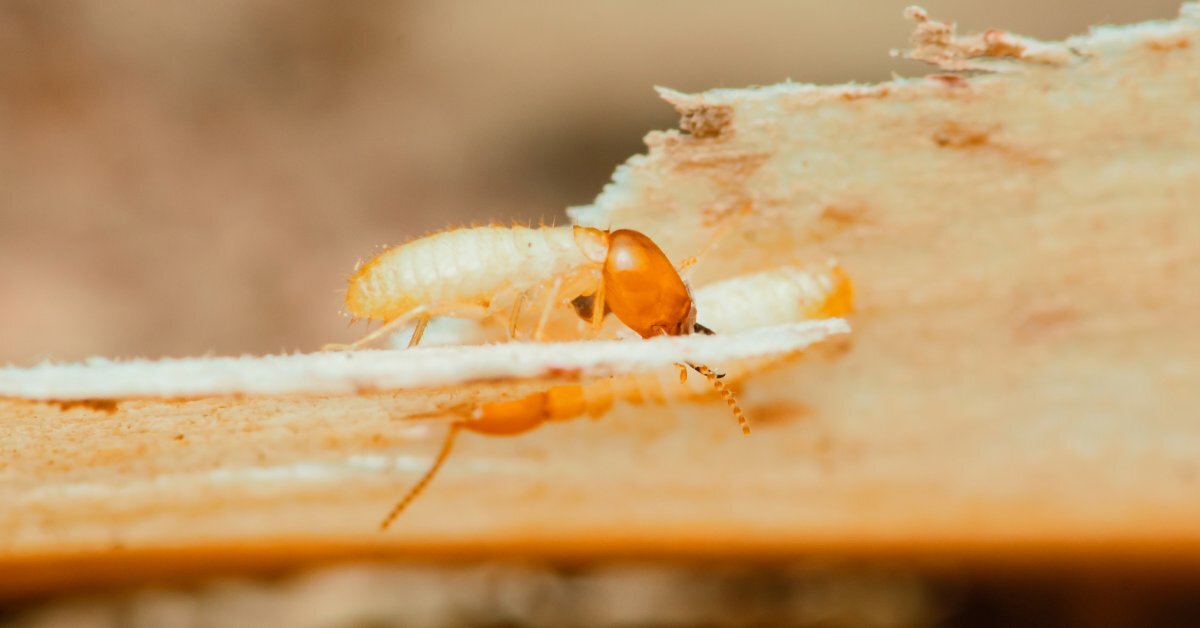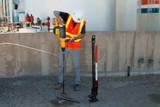Why You Should Regularly Check Termite Bait Stations
In industries such as agricultural or groundwater management, unseen threats can quietly undermine your work. Among the most persistent and destructive threats are termites. Their subterranean activity often goes unnoticed until the damage is already done. And that’s a major reason why you should regularly check termite bait stations. Whether you’re trying to protect crops, monitor soil, or safeguard infrastructure, routine inspections are quiet but powerful ways to defend the integrity of everything your work depends on.
Prevent Structural Damage

Unchecked termite populations can erode structures from within, sometimes for months or years before the damage becomes visible. Their affinity for cellulose-rich materials means that wooden beams, floor joists, and temporary project offices may all become targets. In field settings, they may also infest storage areas or shelters for sensitive equipment.
Instead of waiting for warning signs, consistently monitoring bait stations prevents small problems from multiplying. Monitoring maintains the stability of built environments while extending the service life of valuable assets.
Protect Soil Integrity
Termite tunneling transforms the physical makeup of soil. These insects disrupt the network of pores that govern water infiltration and retention, sometimes skewing results in compaction or permeability testing. For engineers and scientists conducting site investigations, altered soil layers may yield misleading data, especially in projects that depend on precise subsurface characterization.
Maintaining a routine schedule for bait station inspections can keep termite activity in check. In turn, soil properties remain more predictable, and the groundwork laid for sampling or remediation stays true to natural site conditions.
Safeguard Monitoring Equipment
Many monitoring instruments, including groundwater wells, vapor probes, or dataloggers, are deployed in outdoor settings for weeks or years at a time. Termites occasionally chew through plastic enclosures, insulation, or even cables, confusing them for organic matter or simply clearing pathways. Such interference can cause data loss or instrument malfunction, which can derail time-sensitive projects.
By regularly checking bait stations near these installations, practitioners can limit exposure of valuable monitoring gear to pest damage. This can also minimize unplanned replacement or reinstallation costs.
Maintain Agricultural Productivity
Crop fields, orchards, and pastures are far from safe from subterranean termites. Some populations feed on plant roots, which stunt the plants’ growth or cause premature die-off. Termites can also compromise orchard trellises, fence posts, or irrigation system supports, slowing routine work and raising maintenance demands.
For professionals managing agriculture, vigilance around bait stations is a direct defense that disrupts termite cycles before widespread plant stress or structural collapse occurs. Holding termite activity at bay contributes to more stable yields, protects soil structure essential for crops, and sustains long-term productivity.
Early Detection of Infestation
Bait stations do more than remove termites: they reveal early traces of colony movement, sometimes well before any outward evidence appears. Termites are naturally drawn to the cellulose inside monitoring stations, so initial foraging can be noticed long before structural or agricultural signs appear.
If termite presence is confirmed, the system lets users swap in targeted bait (often a growth regulator) in order to gradually eliminate the colony at its source. This capability means practitioners can act early, preventing small outbreaks from cascading into site-wide problems. By catching activity at the earliest stage, reaction time improves and interventions remain more focused.
Reduce Chemical Use
Traditional perimeter treatment methods, such as soaking trenches in termiticide, can be broad and indiscriminate. Besides raising costs, these methods also introduce environmental risks: chemicals may migrate, potentially affecting non-target soil or leaching into sensitive groundwater.
With regular inspections, termite bait stations allow users to target only active areas. Such precision limits the need for repeated applications and suits sites managed under modern stewardship principles. This is especially important for those aiming to reduce new chemical loads during remediation or monitoring campaigns.
Comply With Environmental Regulations

Construction, remediation, and research projects must often document the steps taken to protect both the site and the environment. Regulatory agencies increasingly prioritize integrated pest management strategies that emphasize record-keeping, targeted application, and minimal ecological impact.
Well-maintained baiting systems fit this compliance model. Detailed logs from station checks demonstrate due diligence and give managers documentation to present during inspections. When paired with tools such as pest control probes and augers, this measured strategy supports regulatory approval and smooth project progress.
Protect Biodiversity
Termites recycle wood in natural habitats, but they become a problem when overpopulating human-managed plots. Relying heavily on sprayed insecticides can threaten other soil life, including earthworms, insects crucial for pollination, and beneficial microbes, which often suffer collateral damage.
Bait stations, by design, focus interventions where they’re truly needed and reduce unnecessary chemical exposure to non-target organisms. For projects bordering preserved woodlots, grasslands, or watersheds, using monitored stations balances pest management with conservation of site biodiversity.
Ensure Worker Safety
Worker safety is a priority on any site, and unnoticed termite infestations can present a serious risk. Damage to scaffolds or temporary wooden supports might not be apparent until a structural failure occurs.
The use of chemical controls also creates possible exposure risks during application. By focusing on routine bait-station checks, teams can reduce these hazards. This forward-thinking approach not only keeps the work area safer but also limits the need for reactive or high-exposure chemical use.
Preserve Project Investments
Project budgets account for upfront costs, but unforeseen setbacks—such as termite damage or lost equipment—can quickly compound expenses. Infestations might delay timelines, require expensive repurchases, or expose the site to liability for damage.
Relative to these potential setbacks, routine inspection and maintenance of bait stations remain minimal in both labor and expense, but they have massive effects on risk reduction. These habits act as insurance, giving projects an extra layer of resilience against problems that would otherwise disrupt schedules or undermine objectives.
For those responsible for the integrity of land, infrastructure, or research across settings, regular termite monitoring builds forward momentum and confidence. Being consistent with bait station maintenance is a key practice that protects everything from the ground up. By understanding why you should regularly check termite bait stations, you strengthen your ability to keep projects secure and lasting.
Let us help you protect your site from soil to structure. We’ll help you choose the right probes, augers, and universal tools for smarter termite control and cleaner data. Our products align with your monitoring plan for precision and efficiency.
Recent Posts
-
Why You Should Regularly Check Termite Bait Stations
In industries such as agricultural or groundwater management, unseen threats can quietly undermine y …November 12, 2025 -
How the Mining Industry Uses Sediment Sampling Data
In mining, the decisions made before the first shovel hits the ground can determine the success or f …September 26, 2025 -
Vapor Intrusion in Soil Sampling: Why Testing Matters
Vapor moves differently underground than it does in the open air. It doesn’t rise in a straight line …September 26, 2025




